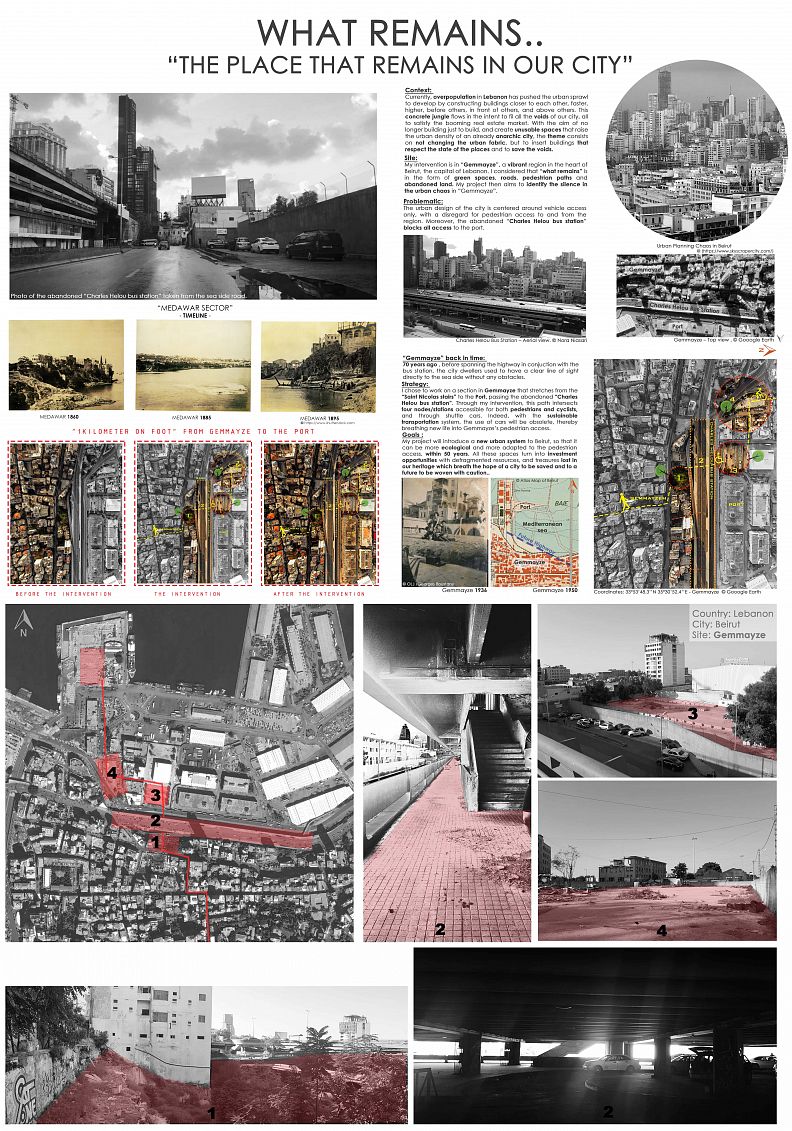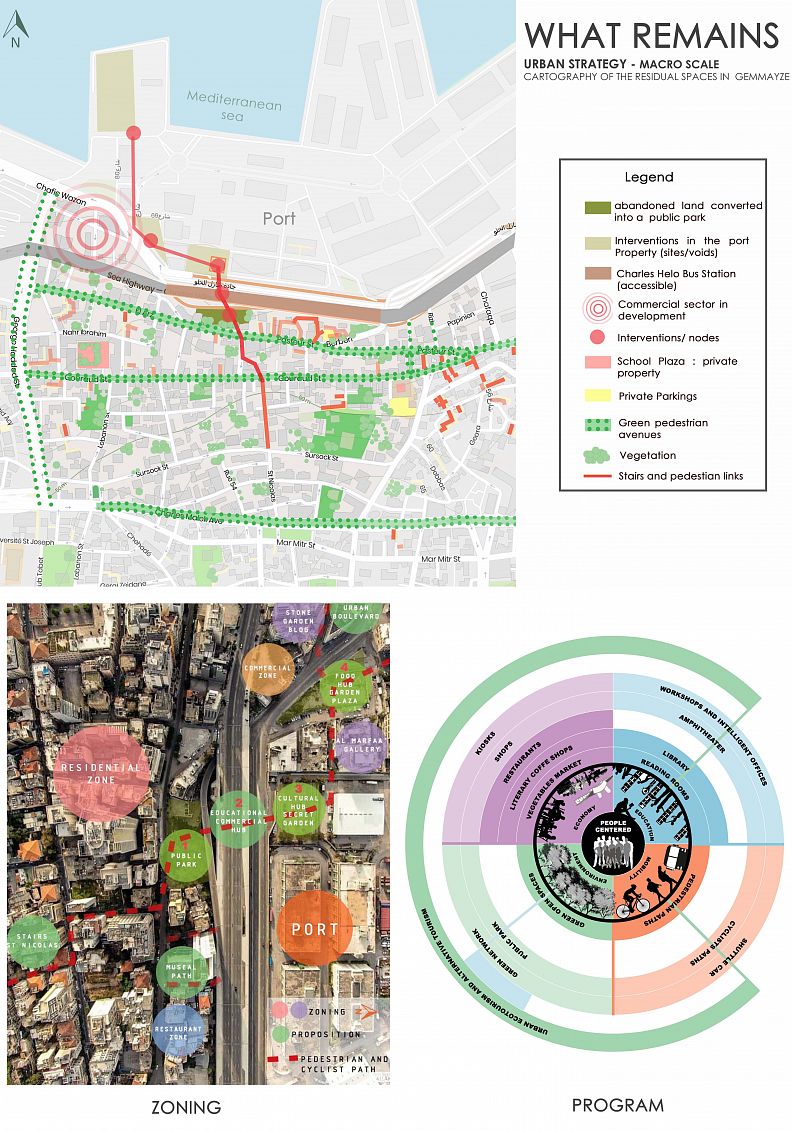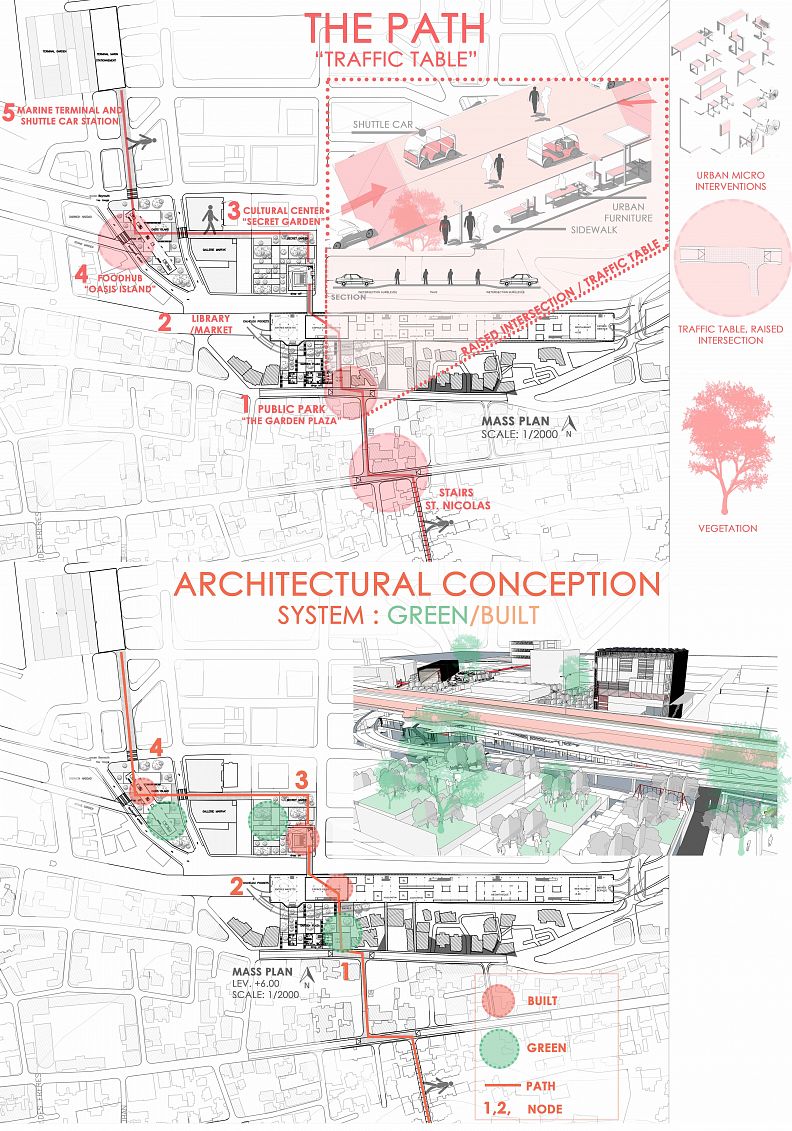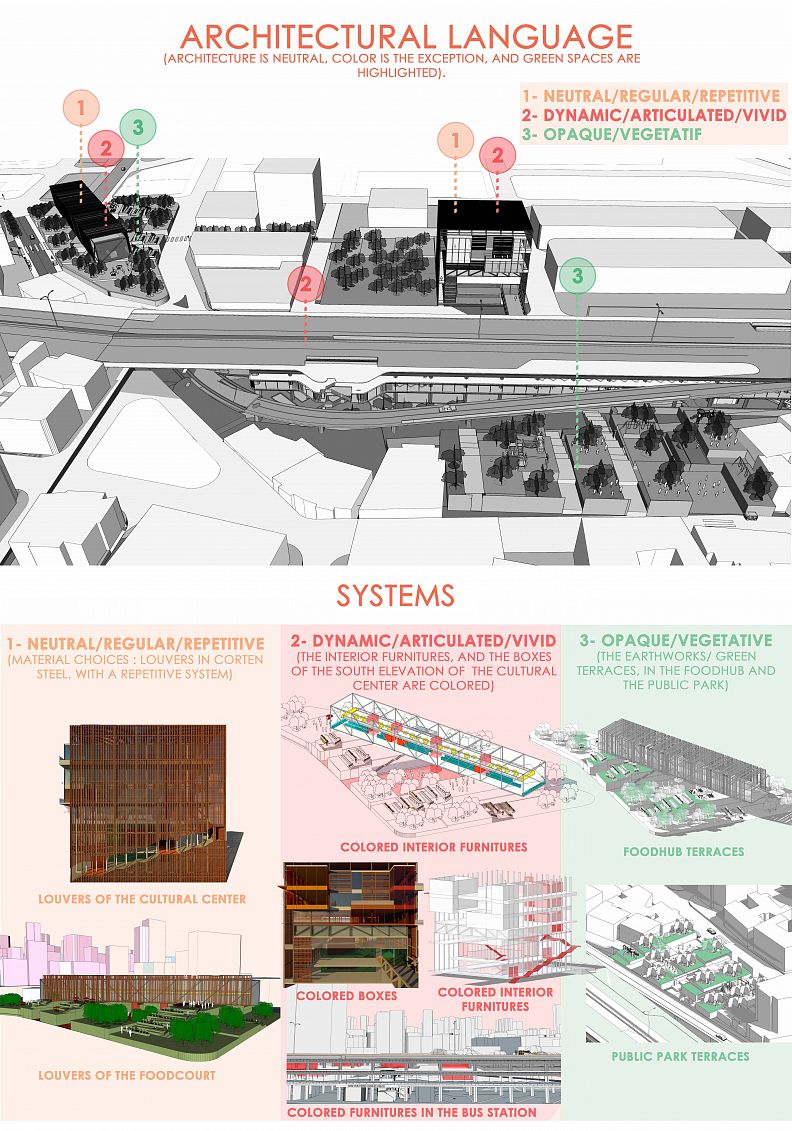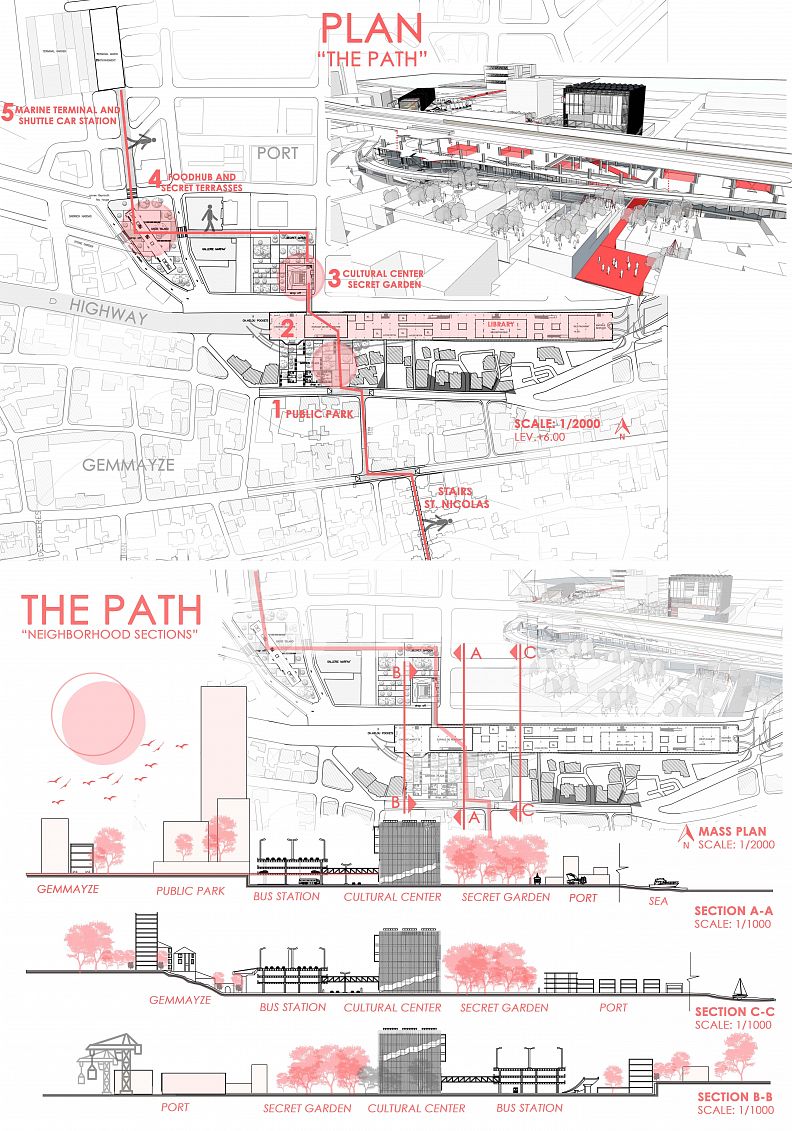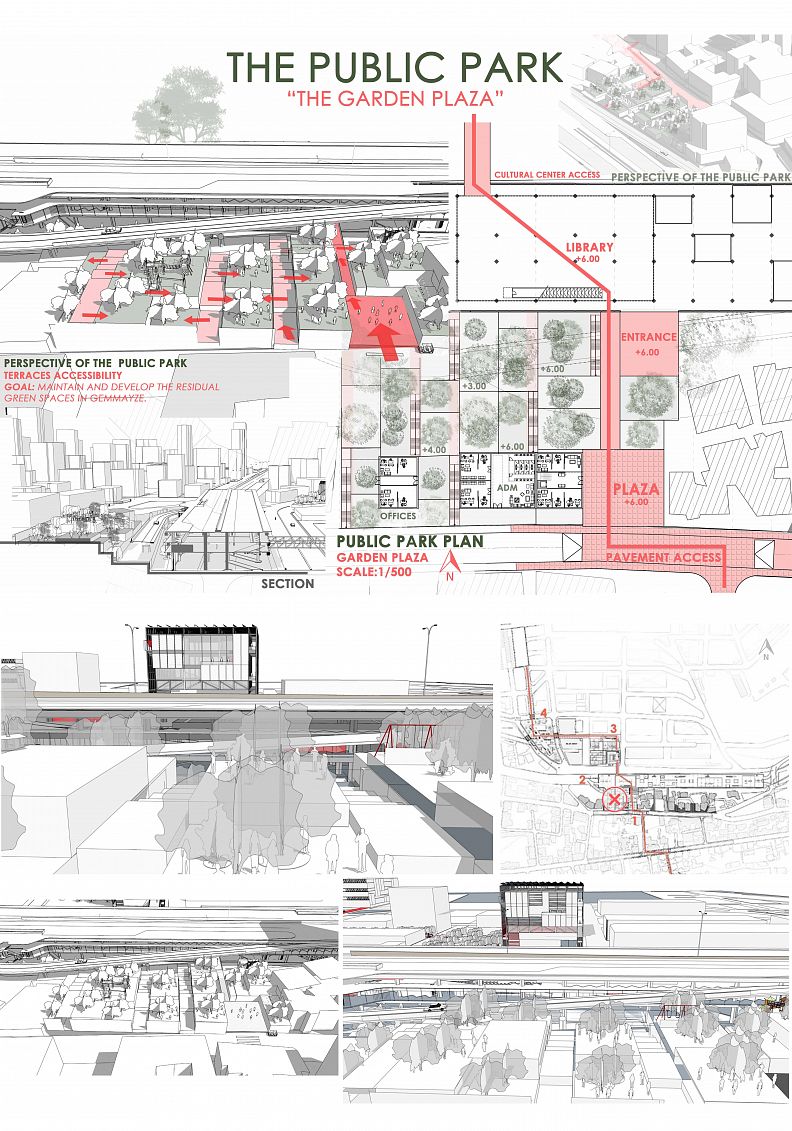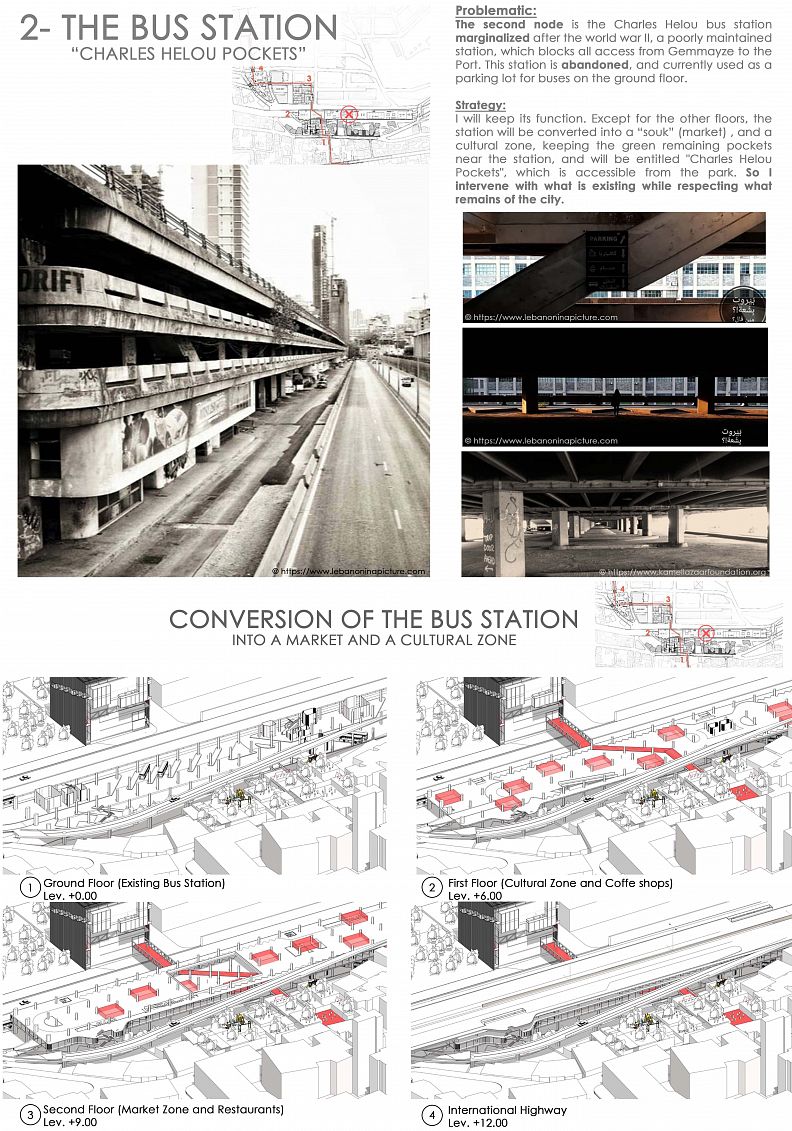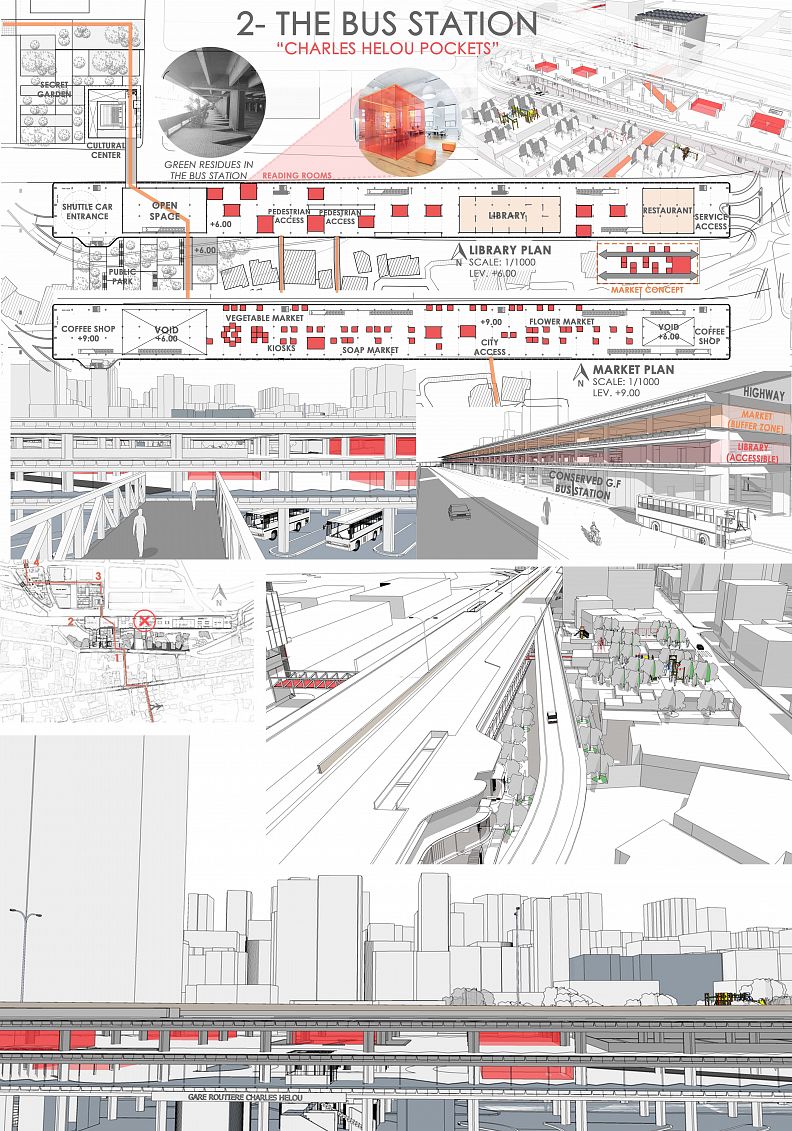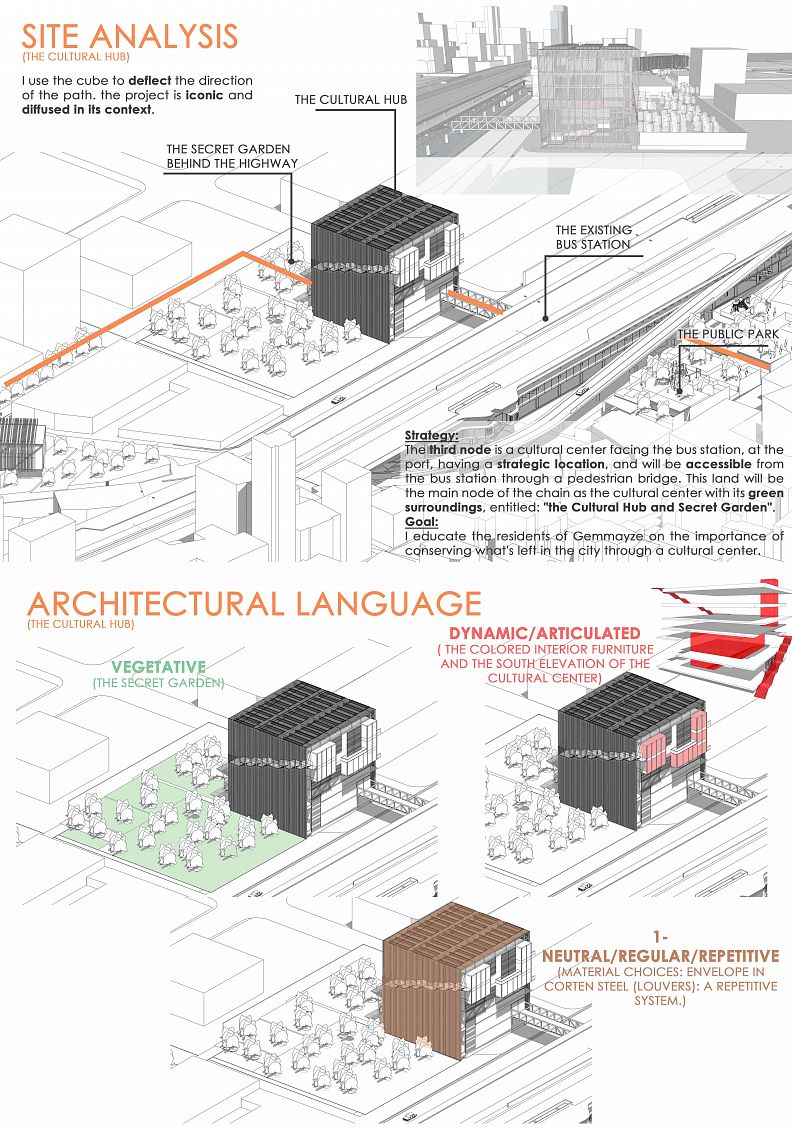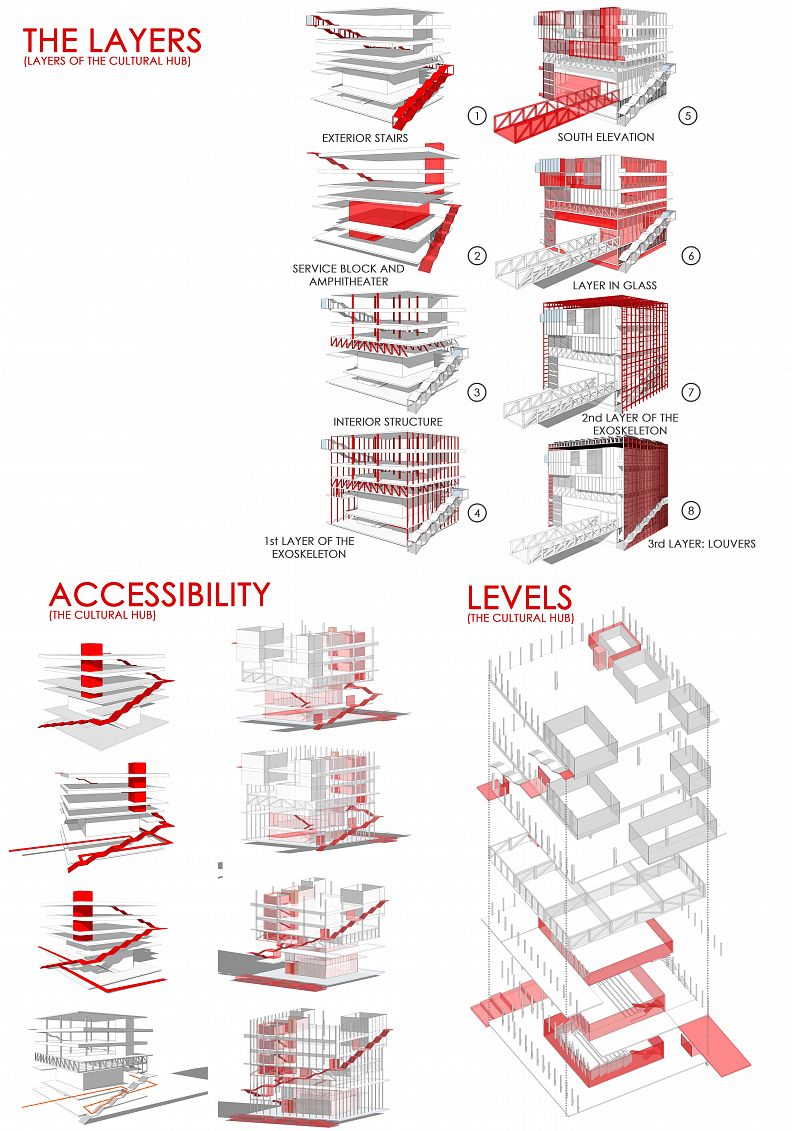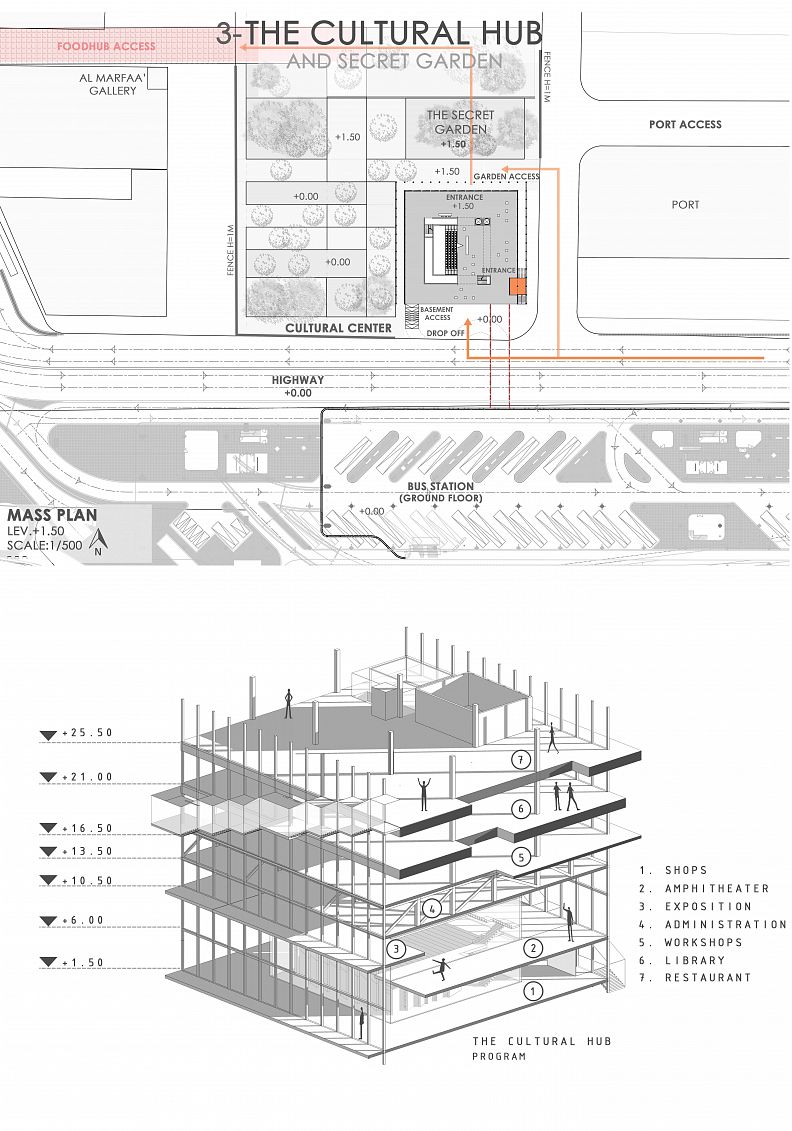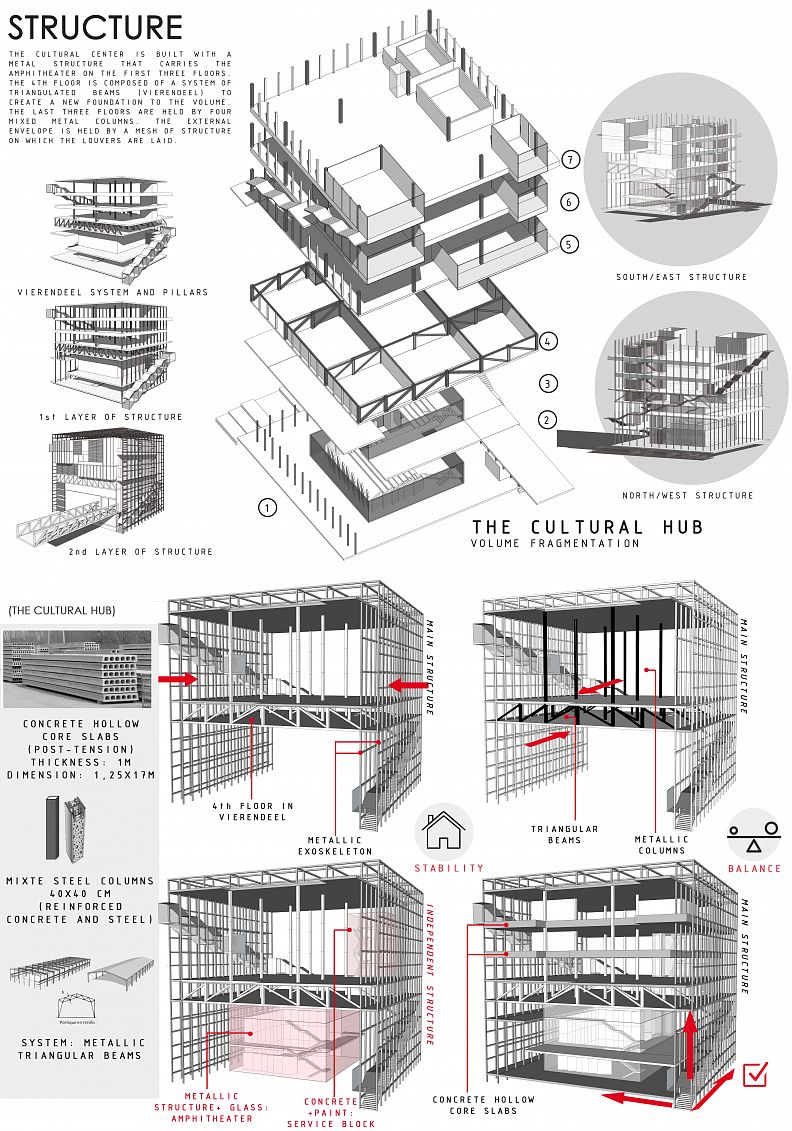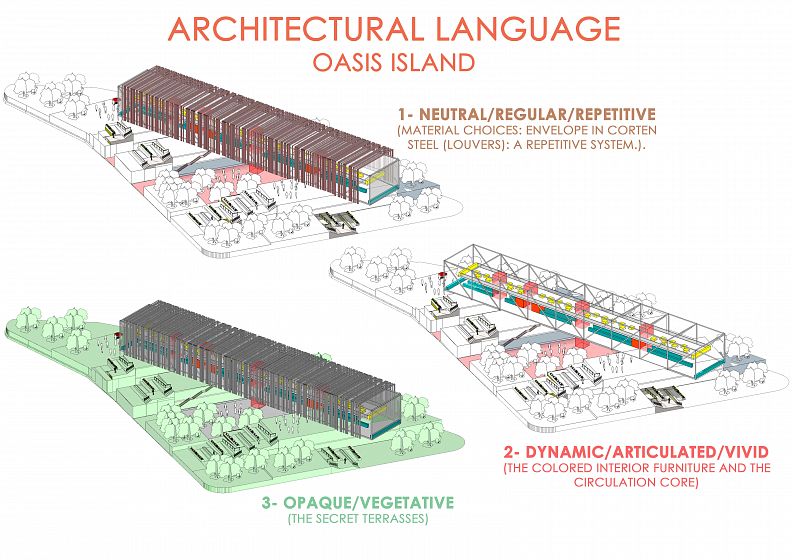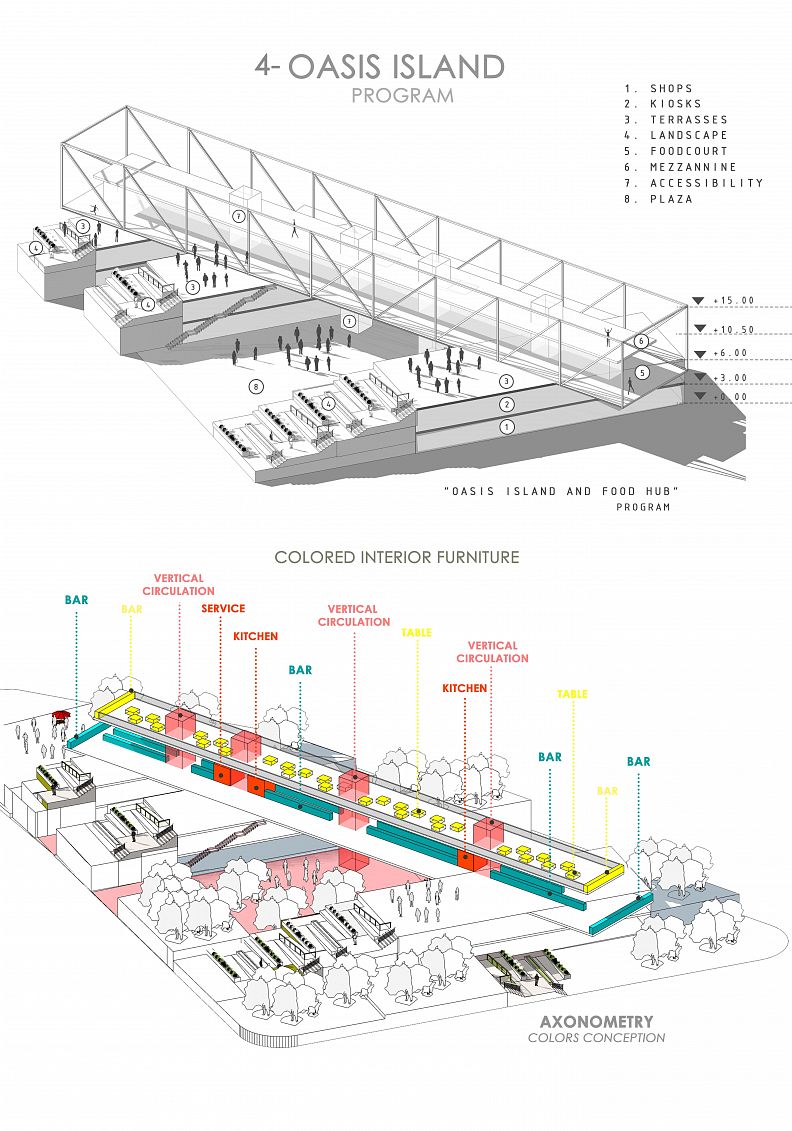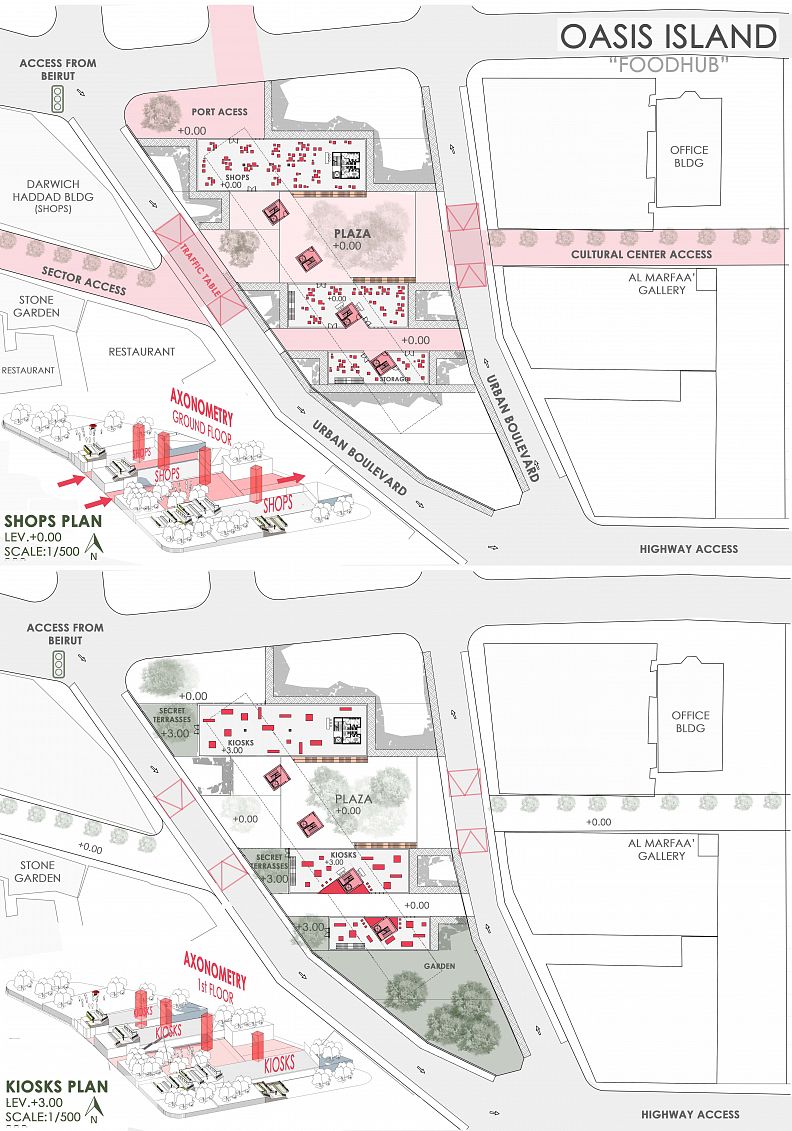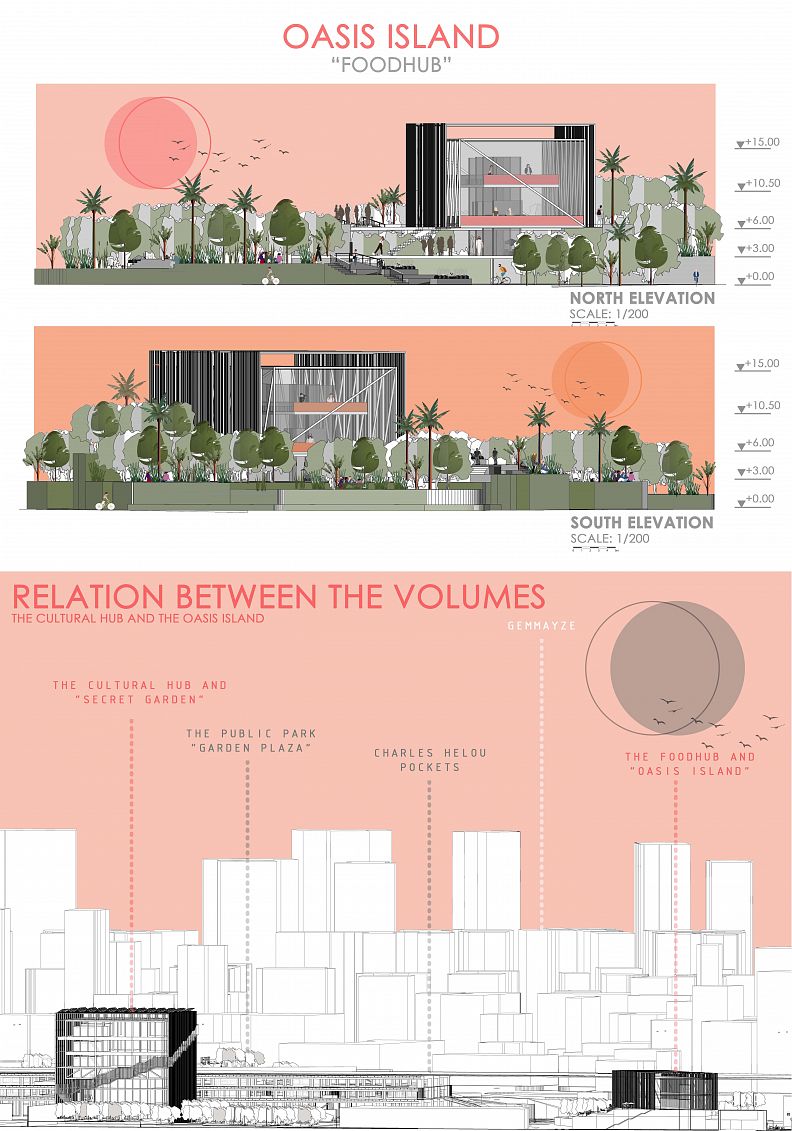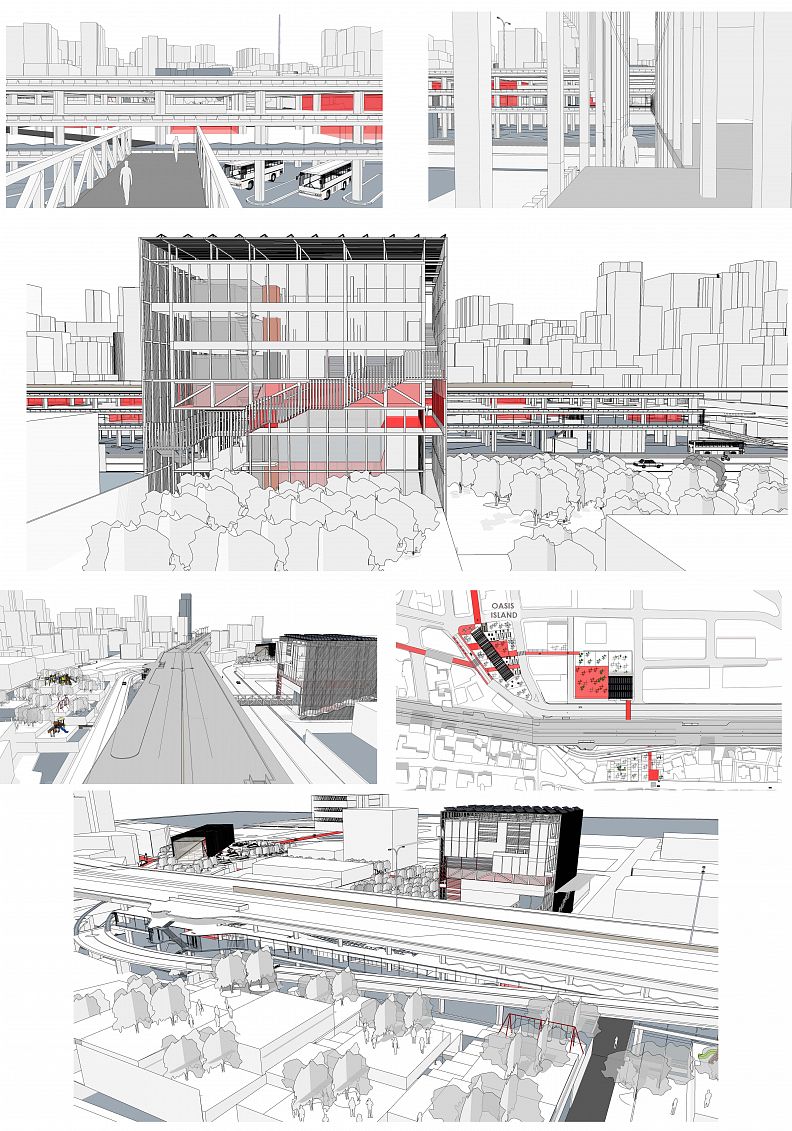What Remains..

Project idea
In Beirut, overpopulation has pushed the urban sprawl to develop by constructing buildings closer to each other, faster, higher, before others, in front of others, and above others. This concrete jungle flows in the intent to fil all the voids of our city, all to satisfy the booming real estate market. With the aim of no longer building just to build, and create unusable spaces that raise the urban density of an already anarchic city, the theme consists on not changing the urban fabric, but to insert buildings that respect the state of the places and to save the voids in the city. My intervention is in “Gemmayze”, a vibrant region in the heart of Beirut, the capital of Lebanon. I considered that “what remains” is in the form of green spaces, roads, pedestrian paths and abandoned land. My project then aims to identify the silence in the urban chaos in “Gemmayze”. The urban design of the city is centered around vehicle access only, with a disregard for pedestrian access to and from the region. Moreover, the abandoned “Charles Helou bus station” blocks all access to the port. However, 70 years ago, before spanning the highway in conjunction with the bus station, the city dwellers used to have a clear line of sight directly to the sea side without any obstacles. I chose the strip that stretches from Gemmayze to the Port, passing by the Charles Helou bus station. Through my intervention, this path intersects four nodes/stations accessible for both pedestrians and cyclists, and through shuttle cars. Indeed, with the sustainable transportation system, the use of cars will be obsolete, thereby breathing new life into Gemmayze’s pedestrian access.
Project description
I chose to work on a section in Gemmayze that stretches from the “saint Nicolas stairs” to the Port, passing the abandoned “Charles Helou bus station”.
The first node which is the public park is located in an abandoned site with a steep slope, a slippery and disoriented space which contains abandoned polluted areas, drowning in a noisy city with a thousand stories. This land will be a public park: "The Garden Plaza" well maintained, and accessible to all residents of Gemmayze. By answering my theme "what remains of our city", I develop the steep land into a park accessible to the public while preserving the green space.
The second node is the Charles Helou bus station, marginalized, poorly maintained, that blocks all access from Gemmayze to the Port. This station is abandoned, currently used as a parking place for buses on the ground floor which will keep its function. Except for the other floors, the station will be converted into a souk (market), and a cultural area, keeping the green remains near the station and will be entitled "Charles Helou Pockets" which is accessible from the park. So I intervene with what is existing while respecting what remains of the city.
The third node is a cultural center in a site opposite to the station, at the port, having a strategic location, and will be accessible. This land will be the main node of the chain as the cultural center with its green surroundings, entitled: "the Cultural Hub and Secret Garden". I educate residents on the importance of conserving what's left in the city through the cultural center.
The fourth node is in a site to the west of the previous site, surrounded by noisy traffic roads with residues of green spaces and Eucalyptus trees, an inaccessible island in the middle of an ocean of roads. This node is converted into a Food Hub with its neighborhood, entitled "Oasis Island". The streets become boulevards. The foodhub therefore links the path by its pedestrian attraction through its function of sidewalk cafes and foodcourt. So I transform what remains into accessible landscaped earthworks.
The fifth and last node, located at the port near the Mediterranean Sea, is a marine and commercial terminal center. This project contains the shuttle car station that will serve my four other projects. Indeed, I get rid of cars, to give life to the pedestrian access, specific to Gemmayze’s identity.
Goal:
My project will introduce a new urban system to Beirut, so that it can be more ecological and more adapted to the pedestrian scale, within 50 years. All the remaining places will become investment opportunities with defragmented resources, and treasures lost in our heritage which breath the hope of a city to be saved and to a future to be woven with caution..
Technical information
Materials:
The palette of materials used is adopted to reduce the visual distortion according to a coherent strategy in order to create a comfortable environment in the project. The corten steel material gives a rusty effect to the project as it is used for its appearance and its resistance to weather conditions. The materials of the foodhub and the cultural hub are the same: "corten steel" for the louvers, evoking the rusty effect to recall with the containers in the port.
Sustainability:
I use the Stack effect or chimney effect in the cultural center which is the movement of air into and out of buildings, resulting from air buoyancy. Buoyancy occurs due to a difference in indoor-to-outdoor air density resulting from temperature and moisture differences.
Systems:
The interior supplies and systems have a dynamic, colorful and articulated architectural language. It is an adaptable system.
Structure:
The cultural center is built with a metal structure that carries the amphitheater on the first three floors. The 4th floor is composed of a system of triangulated beams (vierendeel) to create a new foundation to the volume. The last three floors are held by four mixed metal columns. The external envelope is held by a mesh of structure on which the louvers are laid.
Risks:
The cultural center has an emergency and service exit in case of fires, and a steel structure mesh and triangulated beams for resistance, in the event of earthquakes.
Accessibility/ Disabled people
The project is accessible by the disabled people through: - The service blocks accessible by the wheelchair. - The elevator with the standard dimensions for disabled people. - The garden ramps with a 6% percentage of inclination.

